Many times we gardeners tend to grow weary by the end of summer and we don’t give much thought to how our flower gardens will look at the end of the summer and into fall. But, you know what, with a little planning your flower gardens can look vibrant and amazing right through fall and up until the first frost.
In spring and early summer, after dreary winter, garden centers stock blooming beauties and we are naturally inclined to grab those spring season flowering perennials and flowers: their blossoms lure us in! But if we think ahead, we can also have an amazing fall flower garden with all the brilliant colors of Autumn!
The Best Fall Perennial Flowers
Although the best time to plant perennial flowers is in the spring, they can also be planted in late Summer and Fall. The reason for planting perennials in spring, is so that their root systems will have time to develop and become established over the summer.
If you do decide to add some of these amazing fall perennials to your garden in late summer or fall, be sure they receive adequate moisture to help them become established in their new home before winter sets in.
If you garden in a colder climate, covering your new plants with extra mulch or leaves will serve to give them a better chance at survival through winter.
Although we often think of fall colors as warm tones like orange, yellows, and russets, the best fall flowers include a very wide range of colors. So let’s get started with some of the most stunning Fall Perennial Flowers to give your late summer and fall gardens a boost.
Full Sun – Part Sun Fall Perennial Plants
Chrysanthemums
Chrysanthemums (aka Mums) are widely popular fall plants! When you think about fall flowers, I’ll bet Mums are the first flower that pops into your mind. Perennial, or hardy garden mums, are a great choice to add to your fall perennial garden. (These are not the same as the large flowered florist mums.)
If you keep them pinched back during the summer, they will get bushier and not bloom too early. They can even be shaped to look like shrubs.
If you live in colder climates, be sure to look for mums that are hardy in your area at your local garden center. Although it’s best to plant hardy mums in the spring, if you do plant them in the fall, it’s especially important to give them added protection over winter. Hardy in zones 4 – 9.
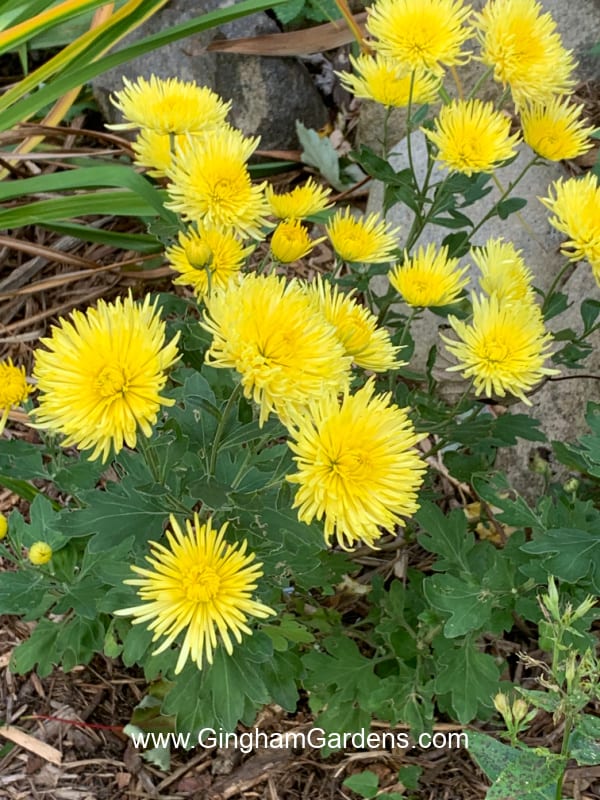
New England Asters
New England Asters (pictured below) are adored by bees and butterflies! It’s like they’re just gleaning all the nectar they can before their winter flight or hibernation! There are many varieties of Asters from very short to very tall.
If you don’t already have some, I highly recommend adding some perennial asters to your garden this year! The bees, butterflies, and you will be glad you did! Hardy in zones 3 – 8.
If you live in the south, an aster you may consider is the Aromatic Aster, Symphotrichum oblongifolium. It’s native to Texas, which gives it a bit more tolerance to heat, and it’s still hardy all the way to zone 4!
The asters pictured below are purple dome, a popular variety, that can be found at many garden centers. They are stunning when they are in full bloom!

Rudbeckia
Rudbeckia, aka Gloriosa Daisies or Black-eyed Susan’s, with their vibrant, traditional fall colors are true standouts in any fall garden! There are many varieties, some of which do better in cooler areas and some in warmer areas.
If you want to plant a variety you love, but which may not be hardy, try it anyway! It might survive winter, but if it doesn’t, you will still have enjoyed a beautiful plant. If you’re lucky, maybe it will reseed!
Rudbeckias are awesome cut flowers and look amazing in fall bouquets. Hardy in zones 3 – 9.

Goldenrod
Goldenrod should not be confused with ragweed! Although many believe it causes an allergy flareup, goldenrod is not ragweed! They are two completely different plants that just happen to bloom at the same time.
Although goldenrod is a native plant, some hybrids are better suited for a home garden. The hybrids are 18-24 inches tall and don’t spread like the native variety, so you don’t have to worry about them overtaking your garden. Hardy in zones 3-9.
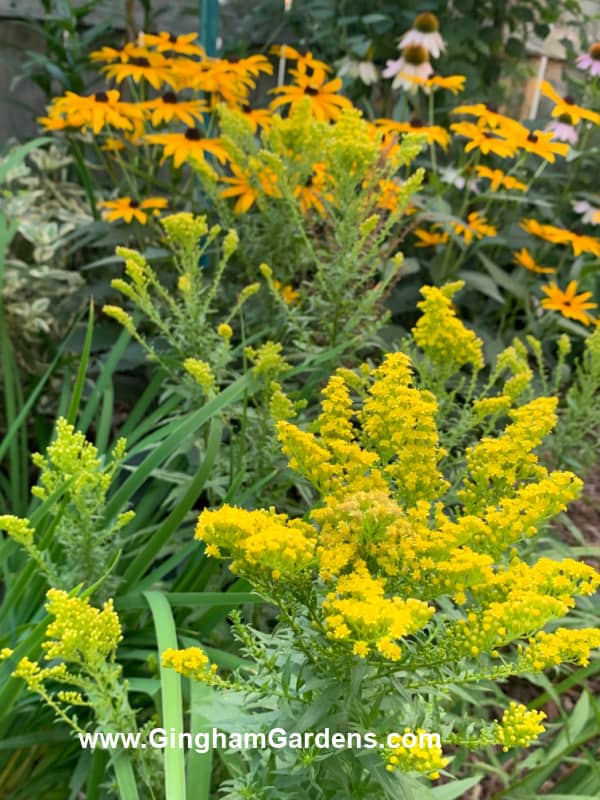
Helenium
Helenium (aka Helen’s flower or Sneezeweed) starts blooming mid-late summer and will carry on right through fall with its amazing rich russet, gold, and yellow colors. Helenium is another plant that benefits from being cut back in late spring to encourage branching for a bushier plant. These bright yellow blooms are just so cheery! Hardy in zones 3-9.
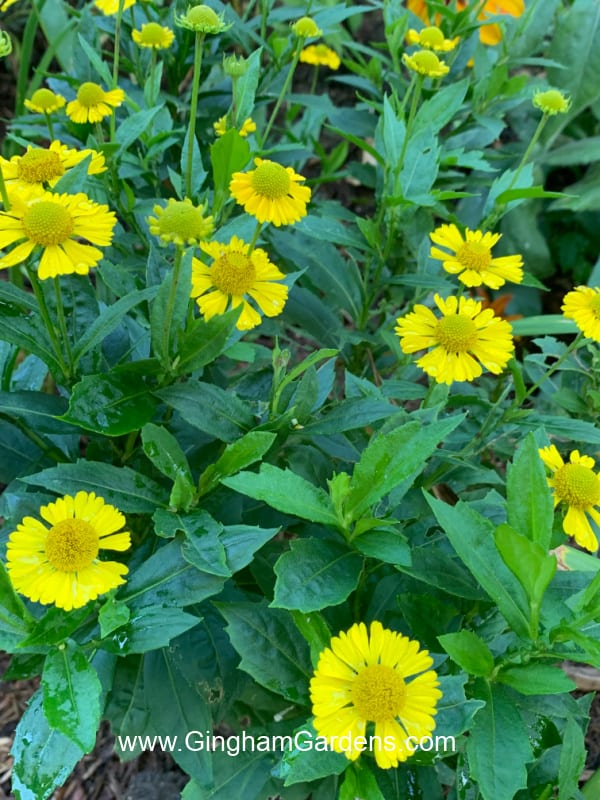
Autumn Joy Sedum
Autumn Joy Sedum is another great perennial for fall! Like many sedums, it’s not especially eye catching, but that starts to change in late summer. When Autumn comes, it begins to show how it earned its name!
As the weather gets cooler, the mauve-colored blooms get darker and more intense. This is another plant that the bees and late summer butterflies flock to. Plus, it’s super easy to grow.
To keep your Autumn Joy Sedum from becoming floppy, pinch a couple of inches off of the stems in summer. Pinching slows it down a bit and makes it a bushier plant. Hardy in zones 3-10.
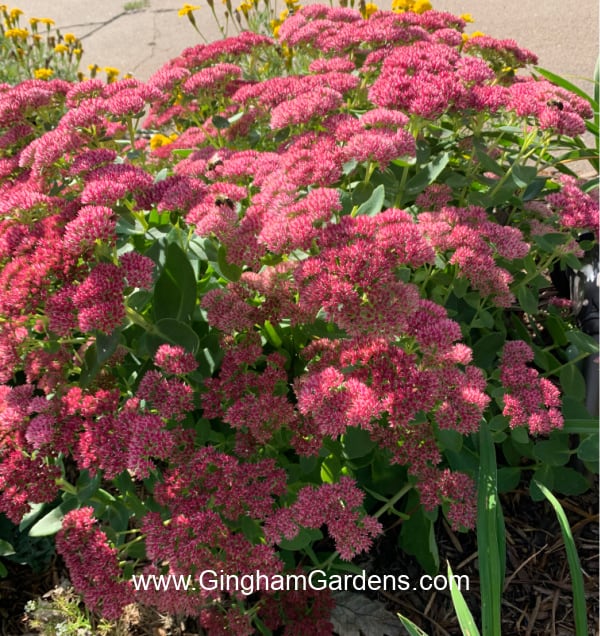
Part Sun – Partial Shade Fall Perennials
Japanese Anemone
Japanese Anemone (also called Windflowers) are beautiful plants with lovely pink and white flowers that are actually from China! They’re good transitional plants between the summer and fall seasons, as summer flowers fade and before fall flowers hit their stride! Depending on the variety, they can grow anywhere from 2-4 feet tall, making them a candidate for the back of the border.
Because of their airy growth habit, they can look at home in both cottage gardens and woodland settings. They can also be grown in pots! Japanese anemones can take a few years to become established, but they’re worth the wait!
Keep in my mind that they spread by underground rhizomes, so keep an eye on them so they don’t become a nuisance. Most are Hardy in zones 4 – 8, but some varieties can grow in zone 9 with afternoon shade.
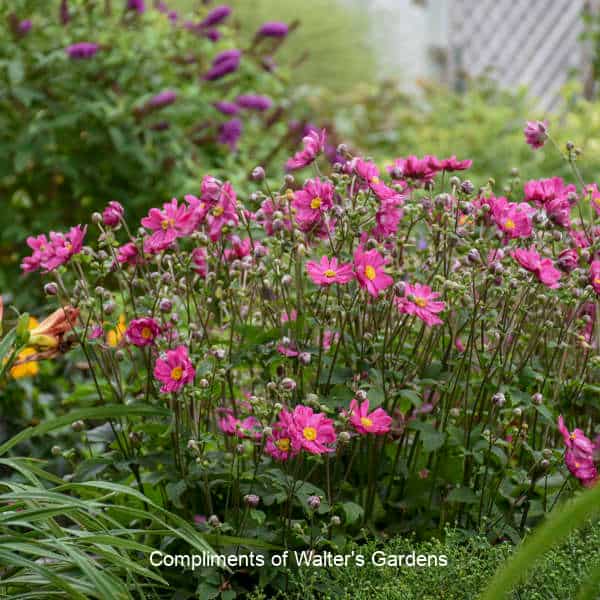
Hydrangea
Hydrangea is technically a perennial shrub, but it’s included here because with many varieties, the fall colors of the big poofy flowers are simply amazing and a perfect plant to add to your garden. Some of the varieties I have in my gardens start out white, then turn pink and from there the color just goes into deep mauve right into fall. There are even some that turn olive green! Hardy in zones 3 – 9!
The picture below includes Strawberry Sundae hydrangeas, yellow and white chrysanthemums and a Walkers low cat mint.
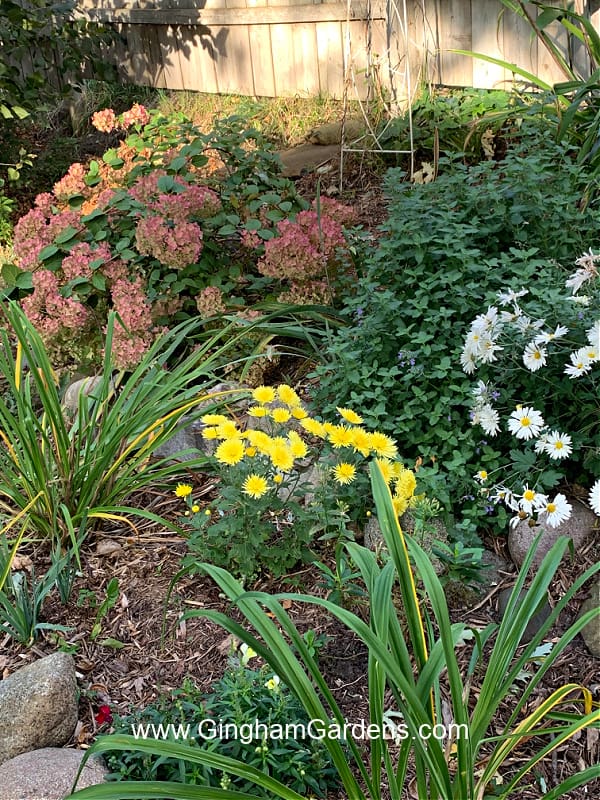
Turtlehead
Turtlehead is a lovely late summer blooming perennial that just doesn’t make many perennial lists. It is a North American native and it has the sweetest pink flowers that supposedly resemble turtleheads. They prefer moist soil and some afternoon shade. The foliage is pretty and glossy looking too. Hardy in zones 4 – 9.
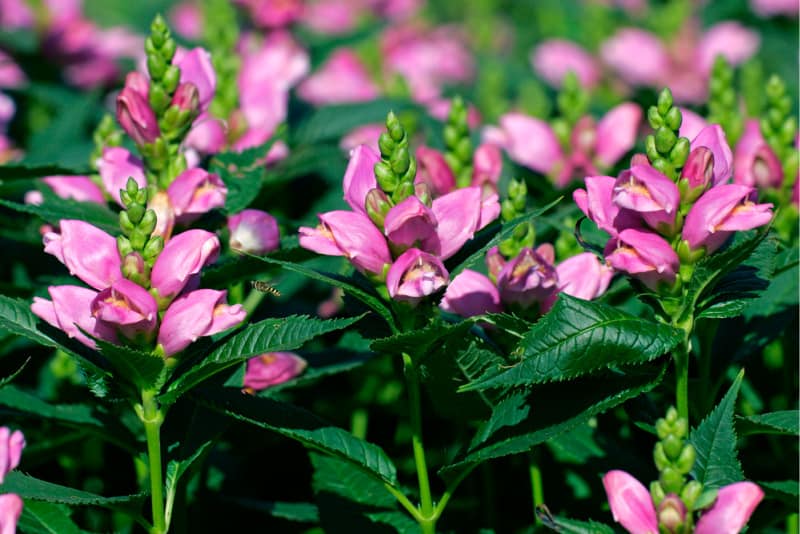
More Perennials in Fall
Many long blooming summer flowers will continue right into autumn. These summer bloomers are especially great to include in your flower beds because of their extended growing season.
- Blanket flower (the common name for gaillardia) is an amazing native perennial with a long bloom period. Once it starts blooming in late spring, it will keep right on blooming into late fall. It’s hardy in zones 3-10.
- Purple coneflower can bloom straight into fall depending on the heat. In the south, they go dormant in July and August, but begin flowering again when the weather cools down a bit. It’s hardy in zones 3-9.
- Balloon flower will grow throughout the season and into fall if you deadhead it. It’s hardy in zones 3-9.
- Joe Pye Weed is another native perennial that will keep blooming and attracting bees to your fall flower gardens. It’s hardy in zones 4-9.
- Russian sage also looks good in a fall garden. Hardy in zones 4-9.
- Coral bells come in a wide range of colors and are grown mostly for their foliage. They look stunning in an arrangement grouped with other fall blooming flowers. They are hardy in zones 4-9.
- Autumn sage (the common name for salvia gregii) is a wonderful woody perennial that comes in a variety of colors and is attractive to hummingbirds. Hardy in zones 7-10, a few selections can be grown as far north as zone 5.
- Catmint (aka Nepata) is another perennial that will add some fall color to your gardens. Shearing it back a few times throughout the summer will keep it blooming again and again. Hardy in zones 3-8.
- Ornamental grasses are a must-have in summer and autumn garden! They add texture and fun element that flowers cannot add! They also make a rustling sound and add movement to the garden as they sway in the breeze.
Adding fall flowering perennials is just one step to designing a perennial garden that has continuous color from early spring right through fall. If you’d like to learn more about designing your perennial garden with 3 seasons of blooms, Gingham Gardens has a Workbook/Guide with tons of tips, tricks, and instructions for doing just that. Learn more about Designing with Perennials for 3 Seasons of Blooms.
What are your favorite fall blooming perennials? Are they included on this list, or did I miss yours? Be sure to leave a comment (the form is at the bottom of the page) and let me know.
I hope you’ve been inspired to add some amazing fall perennial flowers to your gardens to include some brilliant and beautiful autumn colors in your home’s landscape.
Here are some additional posts about fall gardening that you will enjoy:
Thanks so much for stopping by Gingham Gardens today! I hope you’ve enjoyed your visit. Be sure to share your favorite fall perennials with me by leaving a comment below, or by saving any of the pictures or pins (below) to your favorite gardening board on Pinterest.
Blessings,
Julie
p.s. You can find Gingham Gardens on Pinterest and on Facebook too.
Pins to Save to Your Favorite Gardening Board on Pinterest:


